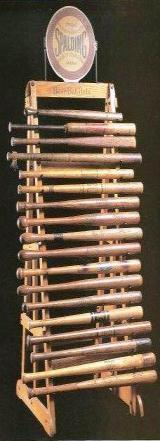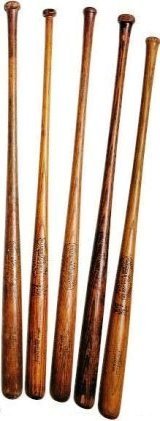Should 12U kids be taking pitches?
by Jeannine
(Mooresville, NC)
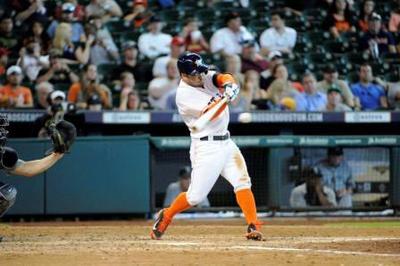
Altuve wins bating title 2014
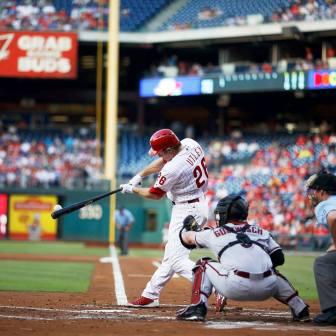
Turn it loose
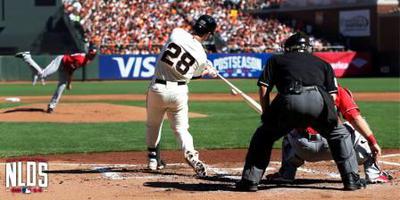
Centerpiece of baseball, the pitcher/hitter batle.
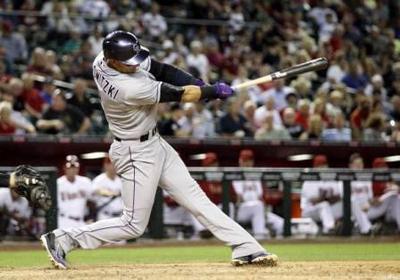
Great balance
Jeannine asked: We have 2 boys (10 and 11) on the same team with a rec league and the coach gives them signals prior to every swing when they are at bat.
He almost always has them take the first pitch.
We were told this is how it is at their age and basically to get used to it.
We have noticed a severe decline in getting on base (other than a potential walk) and often starting behind in the count.
Our philosophy has always been to swing the bat if it's close. We are really concerned about the psychological impact that appears to be developing as their swings now seem to be slow.
We finally connected that to hesitance since their batting is not of their own mindset but from the coach. They were told that if they disregarded the take sign (regardless of whether this resulted in a hit that ended them on base or advanced a runner) three times they would be benched.
So on top of everything, add some fear. When the main coach told our oldest to take and he did the first base coach yelled at him for not swinging.
Needless to say, both are frustrated and the youngest especially who used to always get on first - now, not very often.
Is this the norm?
Rick answered: Jeannine, thank you for your question.
I don't know if this is the norm or not; but if it is, it shouldn't be.
Hitting a round ball, with a round bat and squaring it up is considered one of the most difficult feats in all of sports to accomplish.
To accomplish it occasionally is not enough to be considered good at it, a player needs to do it consistently, thus added difficulty.
There is nothing less dangerous on a baseball field than a hitter who doesn't swing the bat, whether it is his decision, the coaches or those inevitable hitting demons which dwell in all our heads.
The world of baseball is filled with statistics. You can win trivia contests with them, game shows and bar bets, all while having fun with the myriad of statistics that are, and have been kept since baseball's inception.
In 1988, MLB began tracking players hitting splits, in all 12 of the possible counts that hitter's and pitchers deal with day to day.
This particular set of statistics provide the two groups above, as well as coaches, valuable information in developing your own personal hitting philosophy, or your teams.
These splits are available for both leagues, all teams and individual players that have played in those 26 years.
In the 8 positive counts a hitter can find himself in, 0-0, 1-0, 2-0, 3-0, 0-1, 1-1, 2-1, 3-1, there were only 3 times in the 26 years seasonal batting averages were below .300; In 1988 @ 3-0 it was .290 and 1-1 it was .299.
In 1991 @ 0-1 it was .295.
The 3 negative counts, 0-2, 1-2, and 2-2 have never produced an average over .197.
The one even count, 3-2, the highest was .242 in 1994, with all other years averaging between .218 to .238.
What does this mean for a youth baseball player, a hitter or a pitcher?
1. Hitting with 2 strikes is hard to do, even for MLB players.
2. Find a way to stay out of 2 strike counts as much as possible.
3. The best way to accomplish that is to hit one of the fastball strikes early in the count.
4. To do that, the hitter needs to step in the box with a plan, looking to hit the first fastball strike they see. The pressure to decide if they are going to swing is eliminated, the focus is on seeing the ball out of the pitcher's hand, making it be a fastball strike, and putting a good swing on it.
5. When you take that first pitch fastball strike, you start to put the pitcher in control of your at bat.
6. There is nothing less dangerous on a baseball field than a hitter who doesn't swing the bat.
Reasons why this approach is successful.
1. Pitchers at all levels are taught to get ahead of the hitter, for the same reasons you as a hitter do not want to get behind in the count.
2. Pitchers are pitchers generally because they have a good arm.
3. To get ahead, they will mostly throw their best pitch, which with a good arm, will be their fastball.
4. Fastball is the best pitch for most batters to hit because the vast majority of batting practice time is spent on fastballs.
5. Very few pitchers are consistently hard to hit on their first pitch, they become difficult when ahead in the count.
6. The batting process is simplified, as the batters have a clear cut plan from the time they leave the on deck circle.
Looking to hit that first fastball strike will help you eliminate swinging at that first pitch curveball in the dirt, which gets into your head.
That curveball strike is most always followed by a fastball, which hitters freeze on, as their head is still spinning from looking bad on the first pitch. It happens at all levels, to include MLB.
Kids at all levels should be learning what it takes to create a plan for themselves in the batter's box. Teach them in practice, turn them loose to play the game.
The game of baseball is simple to play; but hard to master. Practice is to breakdown the skills and situations so players understand "why" you do something a certain way, games are where they have an opportunity to showcase what they have learned.
Will they make mistakes, lose games? We all did and will, it is a part of the game and life.
Players become free flowing and confident athletes when they are able to think for themselves, on their feet, on the move, in the batter's box, on the mound.
In my time in little league, high school, jr. college, university and 38 years of coaching, our only takes were an automatic 3-0, even the MLB turns very few loose in that count. The second is if we are behind and are needing to play "catch up", we sometimes take until we get a strike; but not always.
I will email you copies of the MLB hitting splits from 1980 to 2013. The 2014's will come out soon; but I would expect little or no change. Those stats are a by product of the game, those that are the most successful adapt to the reality and find ways to make it work.
Some links on the site you may find helpful:
batting average analysis
hitting team approach
hitting vision
hitter development
hitting the situation
Good luck as you move forward. You and your boys are in a tough spot. Possible to play for someone else with a different philosophy, or is it wait till next year?
Yours in baseball,
Rick

